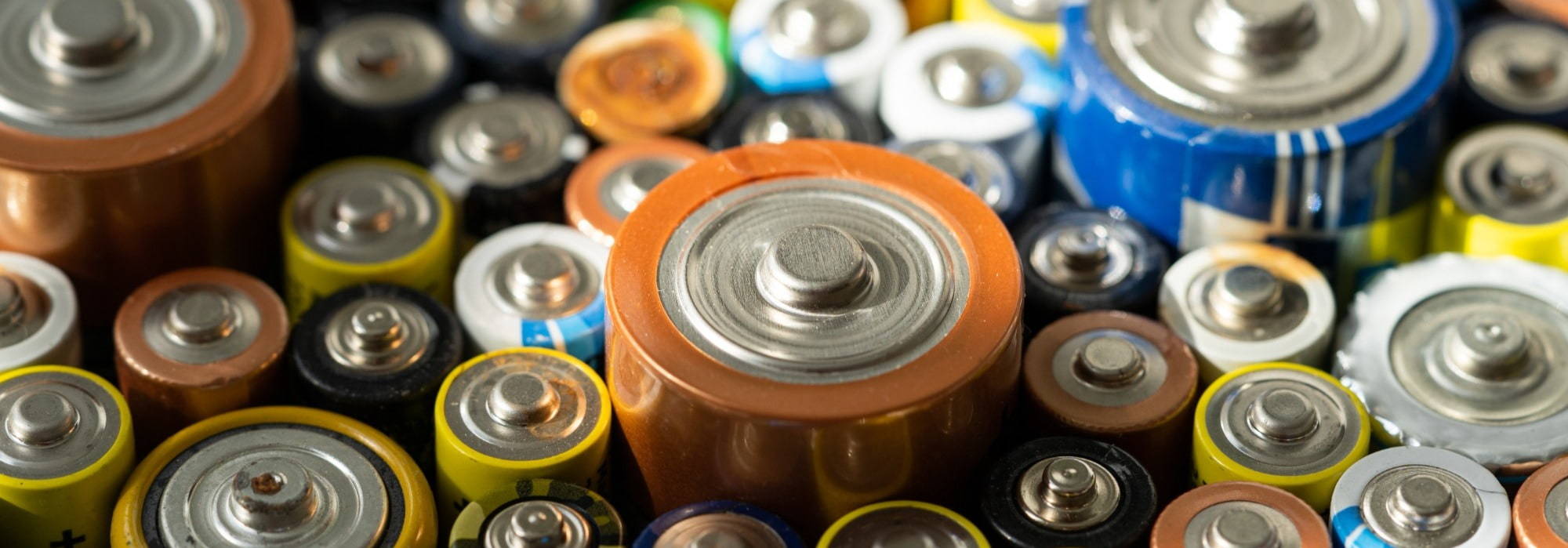Can Battery Technology Really Power Our Future?
12 Mar, 20214:37Scientists have long been searching for the secret to the perfect battery. Now more than eve...

Scientists have long been searching for the secret to the perfect battery. Now more than ever, as the world’s governments set clean energy targets, the pressure is on to find the most efficient ways to produce, store, and use energy.
So how close are we to finding the perfect battery? What are the current challenges within battery technology and what are some of the latest technological advancements within the field?

Challenges in today’s battery technology
In 2019, the Nobel Prize in Chemistry went to John B. Goodenough, Stanley Whittingham, and Akira Yoshino, who played a major role in the development of the lithium-ion battery. The Li-ion battery is lightweight, rechargeable, and powerful. It can now be found in most of our phones, laptops, cars, and electronics we use every day.
The Li-ion battery also presents opportunities for storing larger amounts of energy from solar and wind power, enabling renewable energies to take up increasing space on the energy market. However, there are still challenges to overcome, and scientists face many hurdles in the race to develop the ‘perfect’ one.
Scaling manufacturing from lab to production
One of the biggest challenges facing researchers is the transition of processes from lab scale to production scale. This is due to the long chain of steps and the important influence the material properties, cell designs and electrode compositions have on the overall process.
Battery production is costly
Another major hurdle is cost. At present, the chemicals, precious metals and materials used in batteries drive the high cost of most batteries. According to an article examining the current status and challenges for automotive battery production technologies in Nature Energy, 70% of the total cost of battery cells is down to the materials used. This issue applies not only to automotive batteries but to most of battery production and research.
This, combined with the fact that the process chain is extremely long, means that battery production costs are highly sensitive to errors within the manufacturing process.
Lithium-ion batteries can present safety risks
Lithium-ion batteries also present safety risks. Although rare, some have been known to combust. According to Oleg Levin, Professor in the Department of Electrochemistry at St Petersburg University, between 1999 and 2012, 1,013 electrical devices caught fire in the US. Between 2012 and 2018, this went up to 25,000. However, this is largely down to the fact that more and more of these batteries are being used by the public rather than decreasing safety.
Combustion can be caused by over-charging, short circuits, manufacturing defects or a number of other reasons. As the temperature rises, the battery overheats. This can cause some of the chemicals to react, leading to a further rise in temperature and eventually ignition or explosion.
Energy and power density
Energy density is dependent on the chemistry and materials of the battery. The materials used for the electrode and composition of the electrolyte define the chemistry of the battery. For example, in the Automotive Industry, researchers have not yet been able to reach the energy density of gasoline, which will limit companies’ willingness and ability to transition from traditionally powered vehicles to fully electric vehicles.
Power density is another challenge for scientists. It has a particular impact on the efficiency of electric vehicles because it determines how fast a battery can recharge. This is a hurdle because the system has to be resistant enough to manage high current density when charging but also low current density when discharging.
Energy and power density factors are also related to the battery’s thermal management and current collectors, the components of which add to the weight of the battery. The materials, chemicals, and design used for the separator, electrodes and electrolyte also greatly influence the energy and power density of a battery.
Battery technologies with promise for the future
Although we have not yet found the formula for the perfect battery, there have been some promising discovering within the field of battery technology.
Cobalt-free lithium-ion battery
Scientists at the University of Texas have created a new lithium-ion battery for which no cobalt has been used in the cathode. They have replaced the cobalt with a combination of nickel (89 per cent), aluminium and manganese. As Professor Arumugam Manthiram explains, cobalt is a scarce resource and is the most expensive material within battery cathodes. The technology they have developed thus makes for cheaper batteries with an even distribution of ions and decent battery life.
Lithium-sulphur battery
The lithium-sulphur battery shows promise for the future thanks to its sulphur cathode material, which is relatively cheap, and is less toxic than lithium-ion batteries. It also has a high theoretical energy density, four times greater than lithium-ion. Monash University researchers have created one that is able to keep a smartphone going for up to 5 days, which is much longer than lithium-ion batteries. On top of that, sulphur is naturally abundant.
Sand battery
The sand battery uses silicon in the anode instead of graphite and outperforms graphite lithium-ion batteries threefold. Researchers at the University of California Riverside have been working on this alternative type of lithium-ion battery for a while. They have found a way to purify the sand, which is then transformed into a powder and combined with salt and magnesium. Once combined, it is heated up to remove oxygen. This results in pure silicon. This technology has the potential to increase the lifespan of the battery as well as its performance.
Solid-state lithium-ion battery
As Saft Batteries’ Research Director, Patrick Bernard, explains, in current lithium-ion batteries, the ions move from one electrode to another through a liquid electrolyte. With solid-state lithium-ion batteries, a solid compound replaces the liquid electrolyte, whilst still enabling ions to move around. Although this technology isn’t particularly new, recent discoveries in new solid electrolyte families have made them potentially as conductive as liquid electrolytes.
Solid-state lithium-ion batteries have the advantage of being a lot safer than liquid-state ones. They also make it possible to use new high-capacity and high-voltage materials which would lead to lighter more durable and more energy-dense batteries.
Vertically aligned carbon nanotube electrode
Batteries are all composed of two electrolytes, an anode and a cathode, through which electrical currents travel. However, these are most often chaotic structures that involve the charge-carrying ions travelling through a tangled maze on their way in and out.
To remedy this, the technology company Nawa Technologies have developed an Ultra Fast Carbon Electrode. This consists of vertically aligned carbon nanotubes which enable ions to travel much more effectively and a lot faster. Nawa have said this could increase battery power ten-fold, improve energy storage and boost battery life cycle. The company has predicted this technology, in its simpler forms, could be on our markets as soon as 2022.
With all these new discoveries coming to the fore, there is much to look forward to in the field of battery technologies in the years to come. It seems like battery technologies will indeed be playing an ever growing role in powering our future.
Using NES Fircroft to find your next role
NES Fircroft has been supporting engineers, candidates, and technical clients across many different industries throughout the past 50 years. As our energy systems transition, we understand how important it is to find the right mix of forward-thinking mindset, technical knowledge, and behavioural excellence in the recruitment process.
Our chemical recruitment team will deliver technical resources to your business, sourcing key hires that fit seamlessly into your company, whether you’re an operator or a start-up. If you’re looking for your next technical chemical job, you can register on our website or search available roles.









